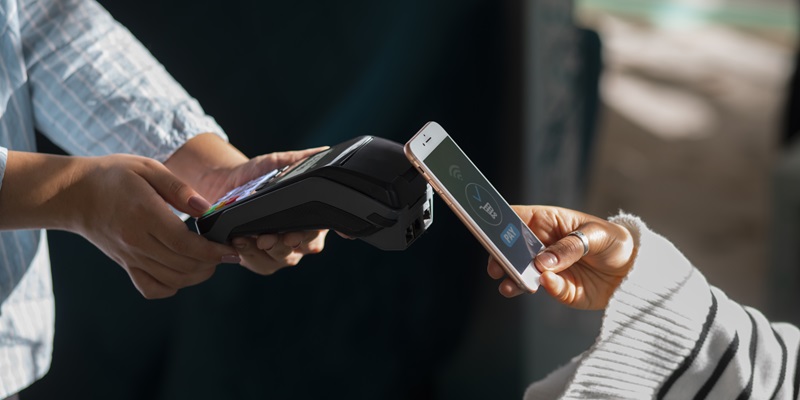In an unprecedented move that could revolutionize the mobile payments ecosystem, Apple has announced that it will open up its Secure Element (SE) for in-app Near Field Communication (NFC) transactions starting with iOS 18.1. This change will allow third-party developers to leverage Apple’s high-security NFC technology directly from their apps, expanding the scope of contactless transactions beyond just Apple Pay and Apple Wallet.
The primary topic of this announcement is Apple’s strategic decision to broaden NFC and SE capabilities for third-party developers. This promises to enhance user experience, increase transactional security, and foster a more versatile digital ecosystem. The implications for developers and users alike are vast and far-reaching.
Expanded Use-Cases
In-Store Payments and Beyond
Developers can now integrate NFC technology for a variety of applications. This opens the door to new use cases like in-store payments, digital car keys, closed-loop transit systems, corporate badges, and student IDs. The potential for innovation in these areas is immense, allowing users to perform tasks they once considered cumbersome with effortless ease.
Contactless technology isn’t new, but with Apple’s Secure Element, its applications can be broader and more secure. Imagine the everyday convenience when students use their phones as IDs, or employees gain access to their buildings with just a tap. These everyday activities become simpler, quicker, and more secure.
Merchant Loyalty and Rewards Cards
Merchant loyalty and rewards cards can also benefit significantly. Users can integrate these into their smartphones, making it more convenient to collect points or rewards without carrying physical cards. This can enhance the customer shopping experience, making it more seamless and integrated, ultimately increasing customer satisfaction and loyalty.
Event tickets may also go through a transformation. Rather than managing paper tickets or even digital barcodes, users can simply tap their phones to gain access to events. This not only enhances user convenience but also reduces the potential for fraudulent activities.
Enhanced Security and Privacy
Apple’s Robust Security Measures
Apple’s emphasis on security ensures that the expansion of NFC capabilities doesn’t compromise user data. The Secure Element is part of a robust architecture that also includes the Secure Enclave—a dedicated secure coprocessor found in Apple’s range of devices responsible for storing sensitive data such as encryption keys.
Biometric authentication, such as Touch ID or Face ID, further ensures that transactions are authorized by the rightful user. This dual-layered security makes it incredibly difficult for unauthorized parties to access the NFC functionalities or the sensitive information stored within them.
Secure Transactions via Apple Servers
Apple also incorporates its own servers for secure relay and verification of transaction data, ensuring the integrity and confidentiality of the transaction. This complex web of security measures guarantees that user data remains protected at all times, making Apple’s secure NFC one of the safest options available for contactless transactions.
When users initiate an NFC transaction, whether it’s for a store purchase or unlocking a door, they can rest assured that the underlying security measures make it as secure as possible. This level of protection is critical in a world where data breaches and identity thefts are becoming increasingly common.
Developer Opportunities
Entering a Commercial Agreement
Developers have a unique opportunity to capitalize on Apple’s secure NFC technology. However, they must enter into a commercial agreement with Apple, request the required entitlements, and comply with industry and regulatory standards. This ensures that only authorized and qualified entities gain access to these APIs.
This process also includes adhering to specific security and privacy standards set forth by Apple. By doing so, developers can not only gain access to cutting-edge technology but also reassure their users that they are providing a secure experience, leveraging one of the most trusted names in technology.
Innovation and Compliance
Once authorized, developers can unleash a wave of innovation across numerous sectors. They can create applications that redefine user interactions, making daily tasks simpler and more secure. From app-based car keys to digital IDs, the possibilities are extensive and promising.
By working within Apple’s stringent guidelines, developers also contribute to maintaining a secure digital ecosystem. Compliance with industry and Apple-specific standards ensures that the benefits of this new NFC functionality are enjoyed without compromising user safety.
User Convenience
Customizable Transaction Experiences
Users will not need to rely solely on Apple Pay or Apple Wallet for NFC transactions. This flexibility allows them to either open the specific app directly or set it as their default contactless app. Users can initiate transactions using simple gestures, making the process intuitive and convenient.
This customization enhances the user experience significantly, allowing for a more personalized approach to mobile payments and access control. Whether it’s paying for groceries or unlocking a hotel room, the process becomes more straightforward and enjoyable.
Universal Adoption and Ease of Use
In a groundbreaking move that could transform the mobile payments landscape, Apple has announced plans to open its Secure Element (SE) for in-app Near Field Communication (NFC) transactions, starting with iOS 18.1. This strategic decision will allow third-party developers to use Apple’s highly secure NFC technology directly within their apps. This change significantly expands the potential for contactless transactions far beyond the confines of Apple Pay and Apple Wallet, making the technology available for a wide range of applications.
The primary focus of Apple’s announcement is its intention to enhance NFC and SE capabilities for third-party apps. This initiative is expected to greatly improve user experience by providing more secure transactional options. Moreover, it promises to create a more adaptable and versatile digital environment, benefiting both developers and end-users. With this development, Apple aims to not only optimize security protocols but also to stimulate innovation and engagement within the mobile payments ecosystem. The potential impact on both developers and users is extensive, heralding a new era in digital payments and app integrations.

